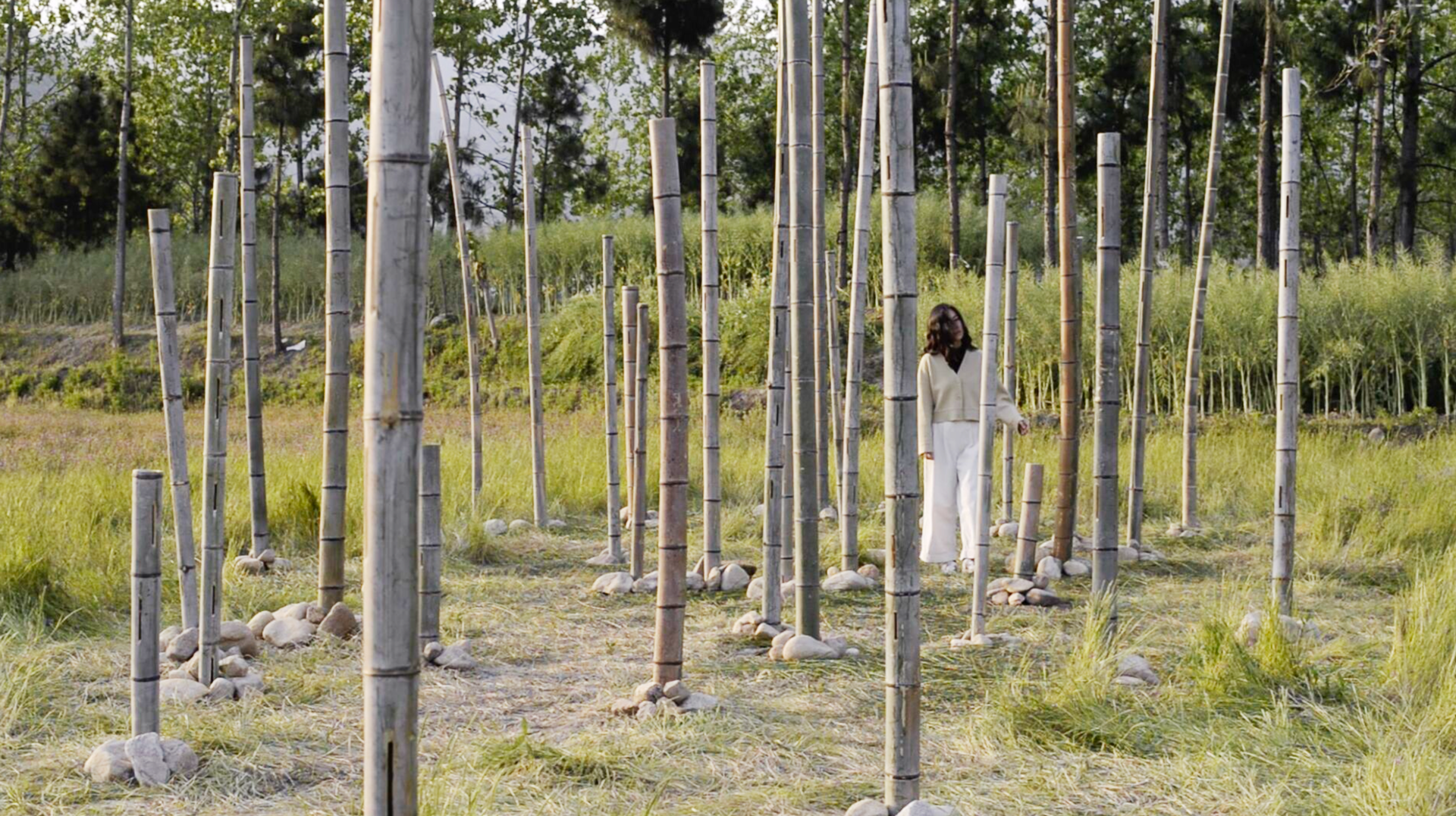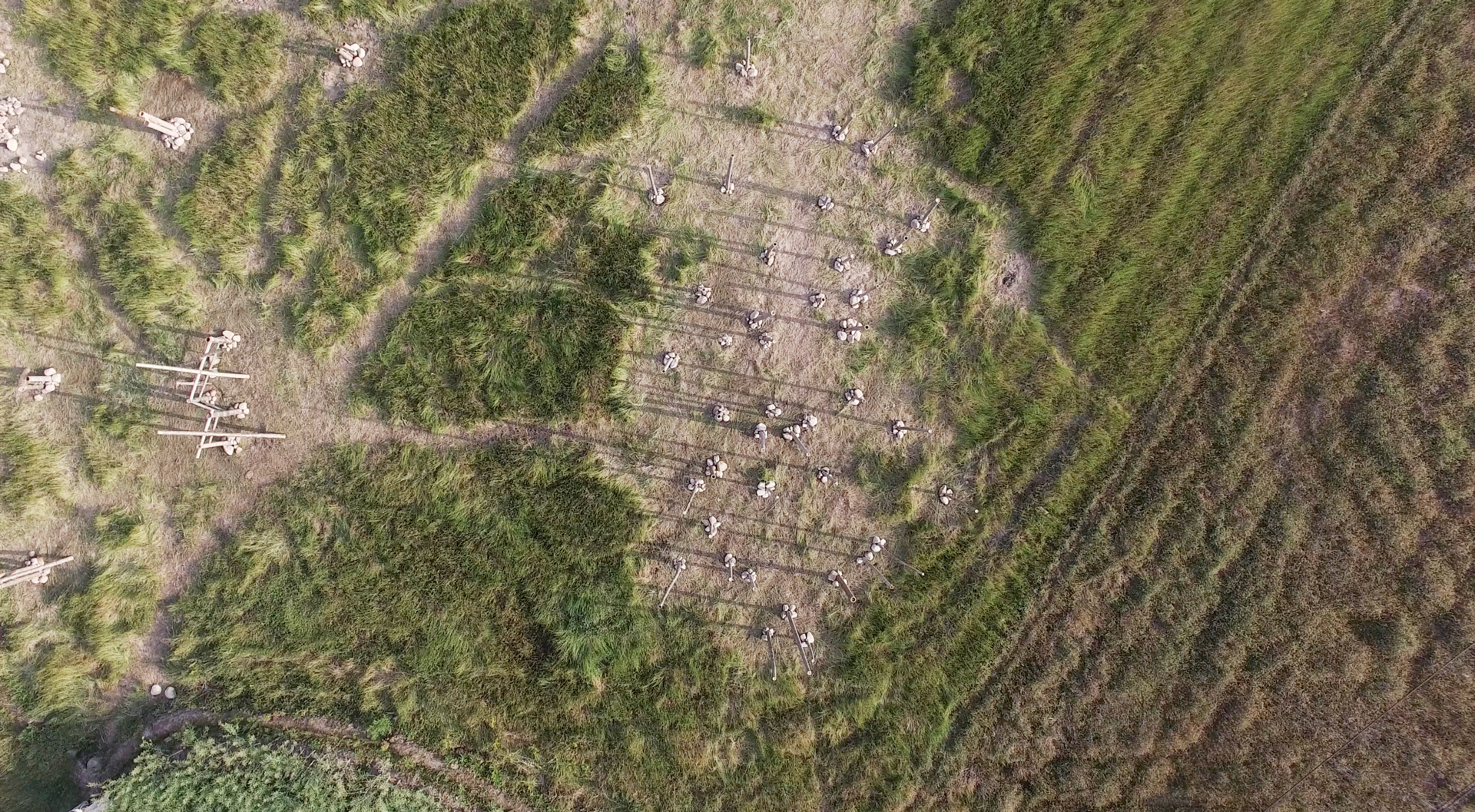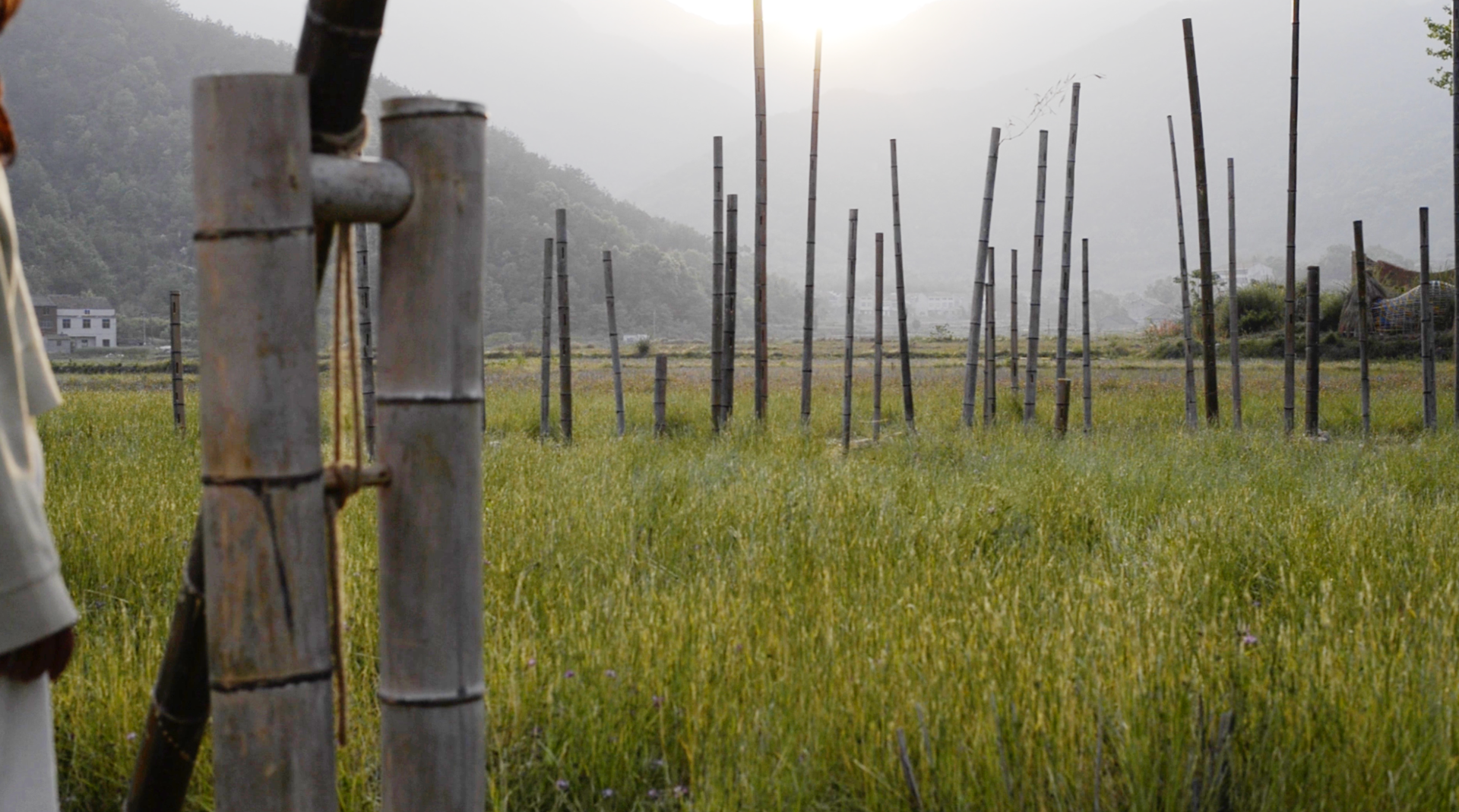Prestigious Prize for MFAD’s Miao Zhao
We are proud to announce that Miao Zhao (Class of 2013) was recently selected for the Arte Laguna Prize Venice Exhibition in the Environmental/Land Art Category, for his work entitled Aeolian Grove.
This artistic installation in Xianglushan Village, Hubei Province, ingeniously blends the traditional bamboo craftsmanship of local villagers with contemporary soundscape art. Crafted by local artisans and carpenter Wu Chuyun, this installation consists of modified bamboo poles that emit flute-like sounds when caressed by the wind. Serving as a meditative and resonant field for the villagers, the artwork varies in sound depending on wind conditions, echoing nature’s unpredictable yet familiar melodies. It stands as a testament to the village’s cultural heritage, offering a stark contrast to urban consumerism and reconnecting the community, especially the elderly, with their craft traditions. This project not only revitalizes agricultural life but also acts as a bridge between rural traditions and contemporary art, inviting wider attention to the region’s rich cultural diversity.
See a video of Aeolian Grove here, and more of his work here.
What were the technical and creative challenges you faced while designing the bamboo to produce specific sounds?
It is imperative that the sound texture is just right – not too sparse or too loud, but sincere enough to express the wind’s own character. The wind conditions will be affected by the changing seasons, weather, and time. The size, shape, placement and direction of the bamboo openings will all have an impact on the sound. I aspired for the bamboo to produce subtle single tones and different textures of chorus resonance, so the whole process became an experiment in creating musical instruments from nature. In my attempts to imitate the Chinese Xiao, I tried facing the circular cross-section of the bamboo towards the wind, drilling round holes of varying sizes to resemble the bamboo flute; however, their sounds were not right for the ever-changing wind. After many experiments failed, I finally found that a long rectangle within a certain size range was the most suitable option.
Talk a little about the relationship between nature, art, and technology in the context of this project?
The village of Xianglushan, where my project is located, is culturally distinct from its surrounding cities. The majority of villagers have little exposure to contemporary and sound art, and instead, they enjoy traditional operas or old pop songs. Thus, I aimed to provide them with a new experience that would allow them to appreciate the inherent natural soul of their living environment.
Most young people from Xianglushan have moved to the cities, leaving behind the elderly, who are primarily farmers aged between 60-80 years old, and most of them are still working as carpenters, bamboo craftsmen, and farmers. They have the skills from making small handicrafts to building houses. By collaborating with these elderly villagers, I hope to help them discover new dimensions of their land through art. Currently, multiple construction projects are underway in the village, and public loudspeakers are broadcasting fire prevention messages all around. At first, I was bothered by the loud noise that came from these human activities. However, I later realized that the contrast between the construction noise and nature’s soundscape was fascinating. It reminded me to be more accepting of all types of sounds. The sound of machinery acted like the percussion part, while the loudspeakers could be the vocal or rap part. Ultimately, all the sounds along with the conversations among villagers may all seem to harmonize together in this “farmland theatre”.
How do you see this project inspiring your future artistic endeavors?
Although I have been working as a nature artist for several years, creating this project was a unique experience for me. I was able to collaborate and live with local residents to uncover the indigenous intelligence in this Chinese village. Prior to working on Aeolian Grove, I preferred to work and experience nature alone. Now, communicating with indigenous people and studying the culture has now become an essential part of my artistic endeavors.
– Is there any way in which your time at MFA Design continues to influence you and your work?
I graduated with a major in graphic design from SVA MFAD, but my two years of studying there taught me more than just design skills. As someone who comes from a relatively conservative Chinese family, I learned the importance of free thinking from the MFAD program and the value of thinking outside of the box while still appreciating who you are. As a designer or artist, I often wonder who I am. Regardless of what I did during my student life in SVA, my teachers and classmates were always interested in my diversity and uniqueness, rather than just evaluating me as good or bad. This helped me understand that I am what I love. School life in MFAD was intense, with lots of assignments and high expectations, but this forced me to realize my potential and enhanced my confidence. I often thought that if I could make such works in such a short period of time, what could I create with more time? After graduating from MFAD, I felt invincible. The possibilities were endless, and I could try anything I loved. That’s why I entered the field of nature art, which seems far away from graphic design (but I love it forever and at the same time it’s still my source of income).



